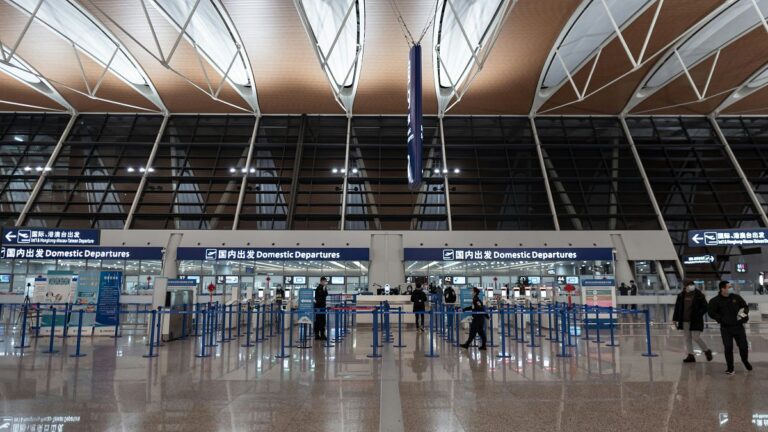advertisement
Italian airports are trialing new security and boarding technology that means passengers no longer need to show documents to board a plane.
The system, called “FaceBoarding,” uses facial recognition technology to allow travelers to pass through security checks and boarding gates without showing a passport, ID or boarding pass.
To use the technology, passengers will need to register at a kiosk at the airport or via an app.
Here’s how the service works and which airports it is available at:
What is FaceBoarding?
FaceBoarding is a biometric system that allows passengers to access security controls and gates using facial recognition.
After checking in, travellers simply present their documents at an airport kiosk, have their face scanned, and then can use FaceBoarding without having to present their documents again.
An app that will allow passengers to register their information in advance is also being developed and is scheduled to be released in June.
Passengers can choose to register for a single flight or all flights until December 31, 2025.
Once registered, passengers will be able to pass through designated security checkpoints and boarding gates without having to show identification or boarding passes.
Faceboarding cuts airport queues
The new system uses biometric software designed by French IT company Thales and security gates from Swiss company dormakaba.
This is expected to reduce waiting times at security checkpoints and boarding gates.
“This will not only reduce control times, but also increase efficiency and guarantee the protection of passenger privacy and data,” SEA, which manages Milan’s Linate and Malpensa airports, said in a statement.
Which European airports use FaceBoarding technology?
FaceBoarding is currently available to all passengers aged 18 and over at two Italian airports: Milan Linate and Catania.
Those who do not wish to use the system can access the security gate as normal using their ID and boarding pass.
Both ITA and Scandinavian Airlines (SAS) are registered with the system, and it is available to all other airlines as well.
Armando Bruni, CEO of SEA, which manages Milan’s Linate and Malpensa airports, said at the launch event at Linate that the company wants to roll out the biometric technology at other airports, including Malpensa.
Biometric checks will soon be implemented at all European airports
Another type of biometric technology is also due to be introduced soon in airports across the EU.
The EU Entry and Exit System (EES) will be an automated registration system for UK and other non-EU travellers who do not require a visa to enter the EU.
advertisement
Every time travellers cross a border outside the EU, they will have to scan their passport and other travel documents at self-service kiosks, which will also scan their face.
The EES does not apply to legal residents or long-term visa holders.
The system registers travellers’ names, biometric data, and the dates and places of entry and exit. Facial scans and fingerprint data are stored for three years after each trip.
This applies to entry into all EU member states except Cyprus and Ireland, as well as the four non-EU Schengen countries (Iceland, Liechtenstein, Norway and Switzerland).
A survey conducted by Co-op Insurance in April found that almost two-thirds of UK adults were unaware of the EES.
advertisement
The survey also found that more than one in five British adults admit that the new rules will make them “hesitant” to travel to Europe.
The system is scheduled to start up on October 6, 2024.

